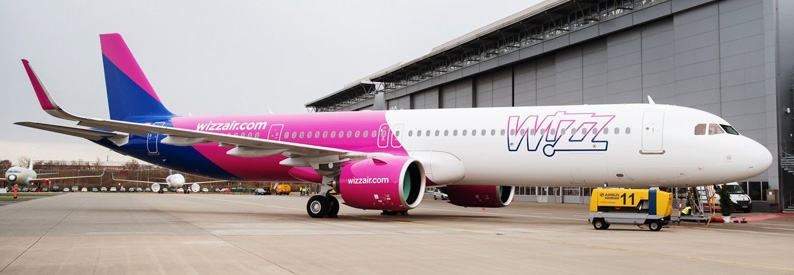Wizz Air Q3 Loss Deepens Amid Fleet Challenges

Hungarian ultra-low-cost carrier Wizz Air reported a steep net loss of €241.1 million for the third quarter of fiscal year 2025, as operational challenges stemming from a 20% fleet grounding due to GTF engine issues weighed heavily on its finances. The unaudited financial results, released on January 30, 2025, come amid a period of mixed performance for the airline as it strives to navigate market headwinds while growing its passenger numbers and revenues.
In Q3 FY25, Wizz Air carried 15.5 million passengers, marking a modest 2.6% increase compared to the same period last year. This growth in passenger numbers was accompanied by a significant revenue boost, with total revenue reaching €1,176 million—up 10.5% year-over-year. Despite the encouraging demand, the airline’s profitability was severely impacted by the grounding of part of its fleet and adverse foreign exchange (FX) fluctuations. CEO József Váradi commented on the challenging quarter, saying, “Wizz Air has continued to navigate the complexity imposed on its operations from the ongoing grounding of some 20% of its fleet, due to the well-documented GTF engine issue. Disappointingly, the benefits of the stronger demand environment did not flow through to our reported profit level due to these cost headwinds and a significant €160m negative FX charge recognized in Q3.”
Passenger ticket revenue alone increased by 13.0% to €626.2 million, while ancillary income—non-ticket revenue from services such as baggage fees, seat selection, and onboard sales—rose by 7.8% to €550.7 million. These improvements helped drive the average revenue per passenger up to €75.79, reflecting a 7.7% increase over the same quarter last year. Additionally, the average ticket revenue per passenger grew from €36.6 in Q3 FY24 to €40.3 in Q3 FY25, underscoring a positive trend in fare performance amid rising demand.
However, the carrier’s operational metrics revealed some challenges. Available seat kilometers (ASK) declined by 1.7% and the total number of available seats dropped by 0.4% compared to the previous year. Despite this slight reduction in capacity, the load factor—the percentage of available seats that are filled—improved by 3.1%, reaching an impressive 90.3%. Operating expenses edged up by 0.6% to €1,252.7 million, even as the airline reported a 1.7% decrease in capacity. The total cost per available seat kilometer (CASK) increased by 3.6%, rising from €4.10 cents in Q3 FY24 to €4.25 cents in Q3 FY25.
On the fleet front, Wizz Air saw an incremental growth of two aircraft over the last three months, finishing the period with a total of 226 aircraft. During this time, the carrier added four A321neos while returning two A320ceos to their lessors. This resulted in the average seating capacity per aircraft rising to 226 seats—an increase of one seat from the previous quarter and three seats compared to a year ago. Looking ahead, the airline plans to receive eight new A321neos during the remainder of fiscal year 2025, while four A320ceos are set to exit the fleet. As of December 31, 2024, Wizz Air’s backlog stood at an impressive 307 aircraft, which includes 260 A321neos and 47 A321XLRs.
While strong demand has buoyed passenger numbers and revenue, the ongoing GTF engine issues and associated grounding continue to impose significant financial and operational challenges on Wizz Air. As the airline works to resolve these issues and modernize its fleet, industry analysts will be watching closely to see how these factors influence future profitability and growth.
Related News : https://suspicious-zhukovsky.67-21-117-18.plesk.page/?s=Wizz+Air
